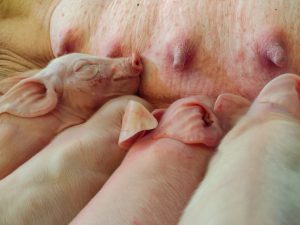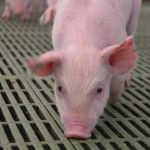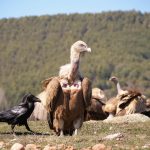How to improve piglets’ health through their mothers

Respiratory diseases are easily transmitted and have a major impact on animal health. Pathogens entering through the respiratory tract encounter a first barrier in the nasal mucosa. There, these pathogens have to cope with the mucosal immunity and compete with a bacterial community that constitute the nasal microbiota. Similarly to the microbiota found in the digestive tract, the nasal microbiota plays a very important role in maintaining the health of the animals. In particular, we know that an altered composition of the nasal microbiota of piglets at weaning can predispose to Glässer’s disease, caused by Glaesserella (Haemophilus) parasuis.
Piglets are colonized at birth through contact with their mothers and receive from them the components of the microbiota together with immune defenses via colostrum and milk. The piglets are kept with their sows for 3-4 weeks, after which they are weaned and mixed with piglets from other litters. This mixing brings them into contact with different bacteria, including pathogens, at the moment where maternal antibodies are already declining. Because of this, and the stress that comes with weaning, thi time is crucial for diseases to emerge. G. parasuis is one of the bacteria that colonize the upper respiratory tract of piglets from a very early age, but there are some strains that can produce an invasive disease, Glässer’s disease. This disease affects piglets after weaning (4-8 weeks of life), producing inflammatory lesions in different organs (arthritis, meningitis, peritonitis…), and has a high impact on piglet welfare and productivity.
The disease is often controlled with antibiotics because commercial vaccines do not protect against all virulent strains. However, antibiotics do not only act against pathogenic bacteria and their application, especially in young piglets, affects the composition of the nasal microbiota and may increase the susceptibility to disease later in life. Thus, the immune status and the composition of the microbiota at weaning may be determinant for the later development of disease. To prevent the onset of disease, piglets should be well protected (immunized) at weaning or immediately after weaning. A difficulty with Glässer’s disease vaccines is the short period of time available for their application. This means that these vaccines have to be applied when the piglets are still immunologically immature and often in the presence of antibodies received from their mothers, which can interfere negatively with the response to vaccination. A good alternative may be the vaccination of the dams to increase the level of antibodies transferred to the piglets in the colostrum, which will remain high even after weaning.
When were vaccinated with an experimental vaccine designed against virulent strains of G. parasuis, the overall composition of the piglets’ nasal microbiota the was altered. The vaccine in the mothers stimulated the production of specific antibodies, which were detected at high levels in the colostrum. Consequently, piglets whose mothers had been vaccinated showed a clear reduction in the presence of the pathogen G. parasuis in their nasal microbiota. This reduction has possibly two causes. On one hand, the direct effect of the vaccine, which would have led to a reduction of the pathogenon the vaccinated dams, with a consequent reduction in transmission from the dams to the piglets. On the other hand, the effect of the antibodies received in the colostrum on the piglets, which would have helped to clear the pathogen. In addition, it was interesting to note that the reduction of G. parasuis strains led to a reduction in the presence of other potential pathogens (Staphylococcus, Neisseria, Streptococcus and Mycoplasmataceae, among others), with which G. parasuis may be possibly associated in the nasal microbiota.
The compositional differences observed reflected functional changes in the nasal microbiota, but it is noteworthy that in the group of piglets born to vaccinated dams we did not detect changes in any function associated with the immune system. Thus, changes in the nasal microbiota could affect the health of piglets in the future, but the mechanism by which this might happen remains to be studied.
CONCLUSION
Vaccination of dams with a vaccine against virulent strains of G. parasuis modifies the overall composition of the nasal microbiota of piglets, beyond the reduction of the vaccine target pathogen, G. parasuis. Vaccination of dams is a good strategy for the control of this pathogen, and possibly others, as they transfer protection to the newborn piglets. Moreover, it should be studied in more detail whether the observed modification of the microbiota provides aa long-term beneficial effect.
This post refers to the following publication, winner of the “Best Article SUIS 2022” award. Vaccination of dams against Glässer’s disease modifies the nasal microbiota of piglets. SUIS Magazine 190 – 16-20, September 2022, and the original paper:
- Sow vaccination against virulent Glaesserella parasuis shapes the nasal microbiota of their offspring. Blanco-Fuertes M, Correa-Fiz F, López-Serrano S, Sibila M, Aragon V. Sci Rep. 2022 Mar 1;12(1):3357. Doi: 10.1038/s41598-022-07382-2
Authors: Virginia Aragón y Flor Correa Fiz













